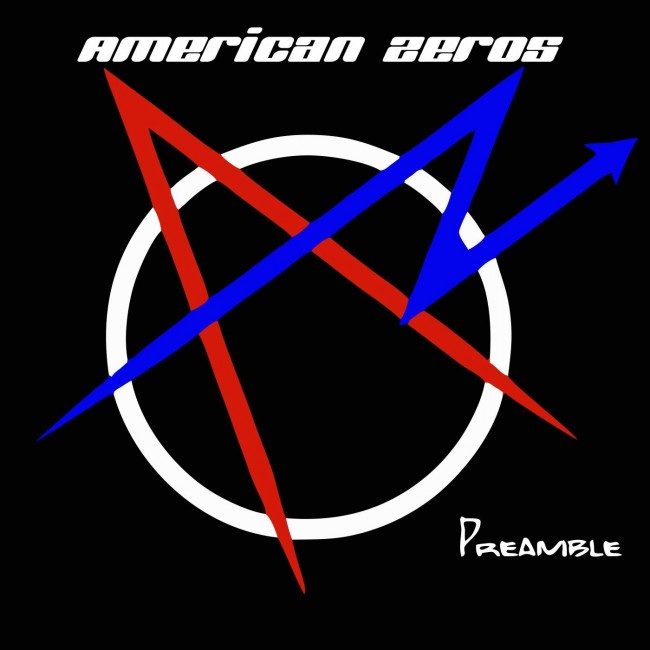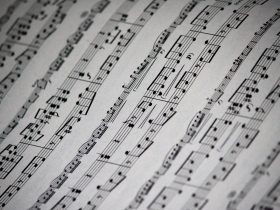February 23, 2012
| Steve

Tonight we have a special new album to share with you. It’s called Lost In Translation by Indiana-based artist Soy La Vid (the recording alias of Mark Abdon). Lost In Translation is a concept album that draws inspiration from nine paintings, all of which can be viewed at the Art Institute of Chicago or in the attached collage. I majorly dig this very cool and creative approach to music-making.
Dave, Kyle, and I have a strong appreciation for the visual arts, cultivated primarily through an amazing course we all took in high school called Art Appreciation with, at least personally speaking, one of the best teachers I’ve ever had. Equal parts brilliant, irreverent, witty, interesting, and badass, Dr. Borowicz was a true gem of an educator and I have him to thank for enhancing my appreciation of this fine album. However, you don’t have to know the paintings or even like art that much to enjoy Lost In Translation as a good piece of music. It holds up just fine on its own.
In the accompanying email with this album, the word “ekphrasis” was used. Fortunately, it was also defined. It means “art inspired by other art.” If I were to make a list of qualities of culture I dig, I know ekphrasis would be an entry. Cross-pollination, referentiality, intertextuality, these sorts of things fascinate me greatly. I took some creative writing courses during college. We had a small art museum on campus, and each semester, our professor would send the class there to do a writing exercise using specific paintings or exhibits as prompts. I found this very rewarding both times; it really got my wheels turning. There was just something so vivid and palpable that made the ideas flow. I think it is because creative works have a certain power that we can sometimes tap into to harness our own creative expression. It was a thrilling moment to feel the spirit of something larger, a connection made across space, time, and media. If all art represents the ongoing human narrative, then one can think of everyone’s individual contributions as soliloquies and the pieces that deliberately draw on others as dialogue.
If you explore Lost In Translation via Soundcloud or Bandcamp, you can read which paintings inspired which songs (at least by clicking each track). The list of artists includes Monet, Seurat, Munch, Guston, and Pollock. Just as these artists span a variety of styles including impressionism, pointilism, surrealism, and abstract expressionism, the music draws upon a variety of styles like rock, electronic, folk, and pop. These tend to be well-matched. For instance, the album opens with “Cliffwalk at Pourville,” based on the Monet painting of the same name. It feels right as an instrumental track. The ambient effects provide a good correlate to the waves in the painting. The melody is peaceful; it swirls and shines like the landscape.
The track shared above, “Bad Times / The Door (That Which I Should Have Done I Did Not Do)” derives from the Guston and Albright paintings. What tied this together for me is the notion of a threshold. Clearly a door acts a barrier between one place and another. It being black here makes it a bit foreboding. I see “Bad Times” a similar way. The ghostlike figures in the car feel of a different world than the (sleeping?) person on the left side of the frame and the arrangement of the painting directs us to view right to left, anticipating a clash. Out of these sources, a rumination on life and death, on the ultimate “crossing over,” feels natural.
The mood of the Pollock-tied piece, “Interdependence Day” sounds right, but I’m not sure the song is quite as kinetic as Pollock’s paintings are to me. In reading the lyrics, I realize that Mark’s inspiration went in a different direction than my initial projection, but reached a place that aligns pretty well with something that I’ve always felt about Pollock’s action paintings. They are some of my favorite works because of their viscerality (in both viewing and the process of creation) but also because they strike such a compelling balance between order and chaos. There is no deliberate structure, but they invite us to find our own patterns, which always seem on the cusp of coalescence. Can’t we think of human social structure the same way? In the aggregate, it’s a maelstrom beyond our ability to comprehend. We struggle to find our place in it. But we inevitably link to others, we form our own small networks, and we navigate as best we can. We ultimately find that we need each other, which is what this song asserts.
I may have drifted off to crazy levels, so let’s ground things a bit. The lovely “Sunday Afternoon” is a pop song with a pretty, straightforward style. I absolutely love the cleverness of the early line “Approximately seven billion little specks on this planet” because it acknowledges the pointilist style of the painting it draws upon (Seurat’s “Sunday Afternoon on the Island of La Grand Jatte”) and strengthens the message of the song: how much he loves his wife. She’s the one for him. The painting conveys a sense of domestic pleasure and relaxation, the sort of idyll two people in love would enjoy together. It may be a priming effect, but I couldn’t help thinking the chords and notes were more staccato to reflect the points and dots. The use of delay on the solo definitely seemed appropriate. In a way, that effect breaks a musical line into discrete points, just like pointilism broke conventional painting down from smooth and unified.
I encourage everyone to take some time to listen to this album and ponder its fertile source material. This is an awesome and inspiring debut record and makes me excited about music and art and life in general. Shouldn’t all art do that? I should admit I was probably destined to love this album for reasons above, but also because I used to spend time thinking about the connections between music and painting. During college, I wrote an article called “Modern Day Mussorgsky” (so named after the composer of Pictures at an Exhibition, a suite of music inspired by a series of artwork by Viktor Hartmann). In it, I would list a famous painting and pair it with a song I felt was appropriate to listen to while viewing it. After the joy of Lost in Translation, I think I need to resurrect that for a few pieces here at Those Who Dig. Look for that soon.
In the meantime, click any of the links above or here to check out Soy La Vid and purchase the album on Bandcamp or listen to it on Soundcloud. Dig on that sweet ekphrasis!





